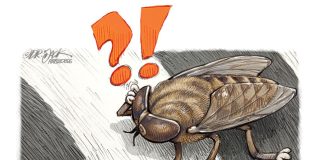In 2007/08 global food prices showed the biggest increase in several decades. However, Africa has had a food crisis for the past three decades.First we must look beyond the recent financial upheaval to the long-term factors that have led to the continent’s low – and declining – per capita productivity, and develop policies accordingly.
What are the long-term structural impediments to agricultural growth on the continent? The negative effects of structural adjustment, impact of agricultural subsidies in developed countries, poorly developed markets, and a lack of political will in agriculture development.
Negative effects of structural adjustment
Initiated in the 1980s by the World Bank and the International Monetary Fund, structural adjustment was designed to reduce the role of government in agriculture, eliminate subsidies, cut back on public sector expenditures, improve balance of payments, reduce government deficits, enhance macroeconomic performance, and help African countries achieve higher economic growth rates.
Because these reforms also removed overvalued exchange rates, reduced taxation on agriculture and raised producer prices, it was widely believed that this held significant benefits for coffee and cocoa farmers selling traditional export crops. But for smallholder farmers producing staple foods for local markets, the net effect of structural adjustment has mostly been negative. Cheap food imports, reduced access to credit at affordable rates and the removal of input subsidies have seen a dramatic drop in the use of modern crop varieties and fertilisers.
Lack of support where it’s needed
The inability of African farmers to take advantage of high commodity prices reflects a mix of underlying problems. These include binding capital constraints, deep poverty, lack of access to new technologies and poor infrastructure – all of which continue to limit the production capacity of farmers.
At the heart of this is the lack of support for smallholder farmers. While farmers in rich, developed countries (where agriculture is a miniscule share of the GDP) continue to receive subsidies, farmers in African countries (where agriculture accounts for high GDP shares) continue to languish, lacking the support that will help free them from productivity and poverty traps.
Low price and poorly developed markets Investment in agricultural technologies is driven by incentives. Output prices play a significant role, as well as the ratio between output and input prices. Unfortunately, because of poorly developed markets and high transport costs, output prices remain low and variable in Africa, with a rapid increase in prices for agricultural inputs.
Poorly developed rural input markets increase transaction costs and make it difficult to access improved seeds, fertilisers and other inputs. High tariffs and non-tariff barriers reduce intra-regional trade flows, leading to greater price volatility.
Lack of political will
Underlying these negative factors has been a lack of political will among Africa’s senior policy makers and agricultural development donors. But this may be changing. Africa’s heads of state have committed to double their spending on agriculture under the Comprehensive African Agriculture Development Programme (Maputo 2003) and the G8 has pledged matching funds. While many of these pledges have yet to be realised, some countries have moved ahead and increased their spending on agriculture. (Ethiopia, Malawi and Uganda spring to mind.)
The vast majority of Africa’s small farmers are saddled with low-productivity technologies, poor transport and market access, limited and costly modern inputs and considerable exposure to market shocks and the vagaries of weather. At the same time, market liberalisation and repeated food emergencies have opened local markets to intense competition from low cost, often subsidised, food imports from abroad. Large numbers of Africa’s small farmers are now trapped in poverty. A package of investments and policy changes are needed to fundamentally restructure the technological and economic landscape in which farmers operate.
Policies for solving Africa’s food crisis
African countries should accelerate investment to raise the productivity of staple food crops. These investments should be in the areas where agricultural growth potential is high. African farmers should have comprehensive support systems. Public support must be combined with a market-driven system to connect farmers to financial markets over time.
African countries need a range of policies to promote the use of fertilisers and improved seed. These should address the demand, supply and technical constraints of expanded fertiliser use. Seed polices should expand the adoption of improved seeds by building the capacity of seed companies, expanding financing for farmer seed producer groups and seed companies and harmonising seed laws to help expand the regional market for seed.
Urgent measures are needed to reduce the risk of borrowing from commercial banks. These should include expanded use of risk-sharing instruments, helping banks better understand the sector’s needs, developing affordable new products and deploying new financial delivery platforms to reach the rural sector.
It’s also very important to invest in development of drought- and heat-tolerant crops, irrigation, improved water management and the scaling up of indexed crop and livestock insurance schemes to prepare for the effects of climate change. Policies for Africa, by AfricaFinally, as the global financial crises has clearly demonstrated, market fundamentalist approaches have failed. This was not an isolated case.
The same lesson applies to African agriculture where the negative impacts of structural adjustments to remove the state from agriculture can be clearly seen.Africa has paid a very high price for such misguided and externally imposed “one-size-fits-all” policies that were not in line with the reality of African economies. African countries should develop home-grown policies to drive accelerated agricultural growth, ones that are not conditioned by the predominant market fundamentalist agendas that have failed them.
Adapted from Global Food and Financial Crises: Lessons and imperatives for accelerating food production in Africa, by Akin Adesina, former president of the African Association of Agricultural Economists, at the Third Conference of the African Association of Agricultural Economists in Cape Town.
Contact Akin Adesina at [email protected].













